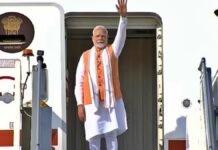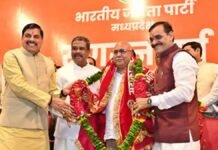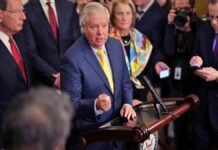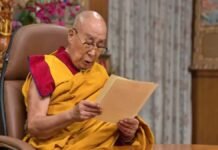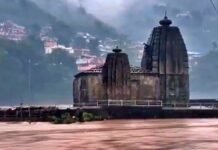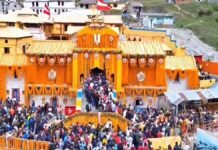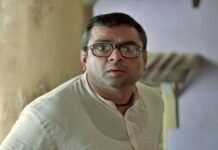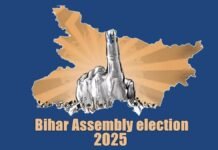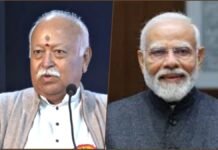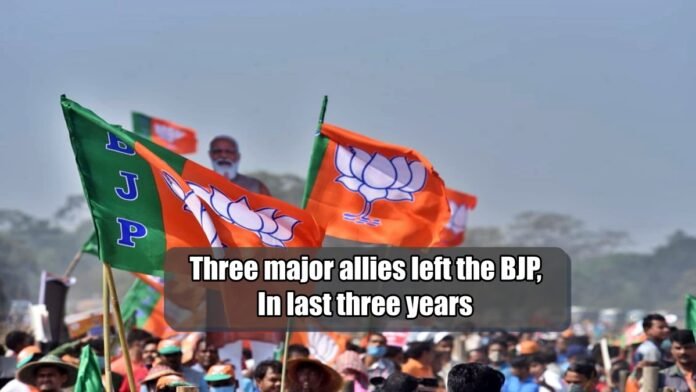
New Delhi: The Janata Dal (United) is the third major political ally of the Bharatiya Janata Party (BJP) after the year 2019. Within 18 months of the BJP coming to power at the Center by winning the Lok Sabha elections for the second time in a row, two of its old allies, the Shiv Sena and the Akali Dal, parted ways with it. With less than two years left for the next Lok Sabha election, the JD(U) has snapped its alliance with it.
The JD(U), which broke away from the National Democratic Alliance (NDA), is the largest party among the BJP’s allies in terms of MPs and MLAs. JD(U)’s George Fernandes was once the convener of the NDA, but the Nitish Kumar-led party broke ties with the BJP in 2013 when Narendra Modi was made the BJP’s prime ministerial candidate.
In the year 2017, Kumar broke ties with the RJD and formed the government with the BJP after breaking away from the Grand Alliance government. After this, BJP and JD(U) fought the 2020 assembly elections together and formed the government in the state, but due to tension in relations, Kumar resigned from the chief minister’s post on Tuesday and staked a claim to form the government with RJD. This is the second time in the last nine years that the JD(U) has severed ties with the BJP.
After the exit of JD(U) from the NDA, the eastern part of the country has become very challenging for the BJP. Particularly, West Bengal, Odisha, and Bihar. The southern states have already been challenging for the BJP. Karnataka is the only state where there is a BJP government. It is trying to emerge as a force in Andhra Pradesh, Tamil Nadu, and Kerala right now. After the separation of JD(U), there are now only two big states in terms of the number of Lok Sabha seats, where there are BJP coalition governments and they are Uttar Pradesh and Maharashtra. Both these states have 128 Lok Sabha seats.

The BJP is not in power in Bihar, Tamil Nadu, and West Bengal and these states have a total of 122 Lok Sabha seats. However, in the 2019 Lok Sabha elections, the BJP won 18 seats in West Bengal and 17 in Bihar. The BJP is in power at the Center since 2014 on the back of strong performance in the North and Western regions and is trying to strengthen its presence in the Eastern and South regions.
Professor Sanjay Kumar of the Center for Study of Developing Societies said about the JD(U)’s separation from the BJP, “It is a clear indication that the allies are not comfortable with the BJP and are parting ways one by one. are.” “But at the same time, it also gives an opportunity to the BJP to consolidate its position in the state where the regional party has left it,” he said.
Akali Dal’s Naresh Gujral said the BJP believes in the strategy of “Ekla Chalo Re” and the NDA was left only on paper. “Those who are in it (NDA) now will also leave there to save their existence,” he said.
Between 2014 and 2019, Mehbooba Mufti-led Peoples Democratic Party and Chandrababu-led Telugu Desam Party parted ways from the NDA. In the year 2019, the BJP’s alliance with Shiv Sena broke down and formed the government thereby forming an alliance with the Nationalist Congress Party and the Congress. However, under the leadership of Eknath Shinde, a large section of Shiv Sena broke down and formed the government in Maharashtra with the BJP. Shinde is heading this coalition government.
Apart from these, All Jharkhand Students Union led by Sudesh Mahto in Jharkhand, Suheldev Bharatiya Samaj Party led by OP Rajbhar, Rashtriya Loktantrik Party led by Hanuman Beniwal, Bodo People’s Party, Gorkha Janmukti Morcha, Goa Forward Party, MDMK and DMDK are also there. The BJP-led NDA broke away. At the central level, the NDA currently has at least 17 allies, while it has alliances with several political outfits in some states as well.

